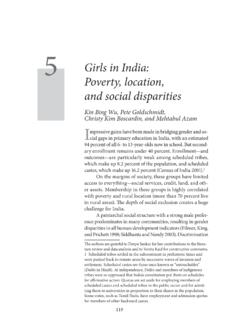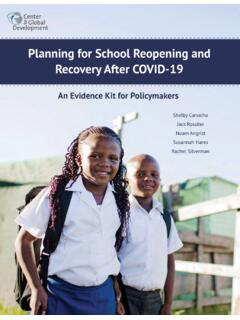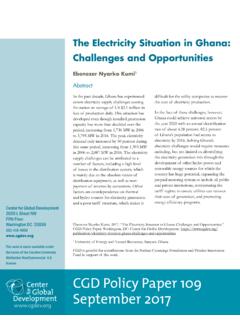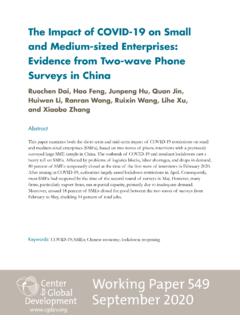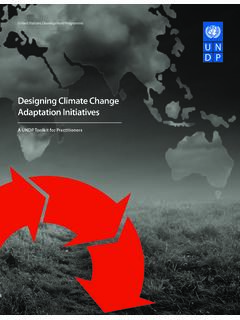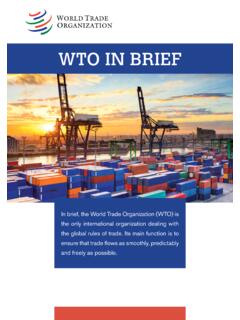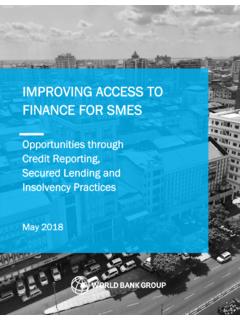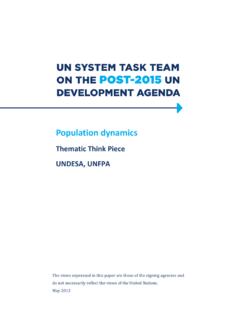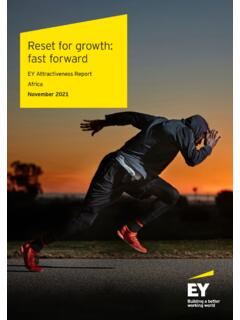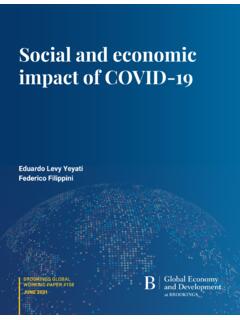Transcription of Examining the Debt Implications of the Belt and Road ...
1 CGD Policy Paper 121 March 2018 Examining the Debt Implications of the Belt and Road Initiative from a Policy PerspectiveChina s Belt and Road Initiative (BRI) hopes to deliver trillions of dollars in infrastructure financing to Asia, Europe, and Africa. If the initiative follows Chinese practices to date for infrastructure financing, which often entail lending to sovereign borrowers, then BRI raises the risk of debt distress in some borrower countries. This paper assesses the likelihood of debt problems in the 68 countries identified as potential BRI borrowers. We conclude that eight countries are at particular risk of debt distress based on an identified pipeline of project lending associated with BRI. Because this indebtedness also suggests a higher concentration in debt owed to official and quasi-official Chinese creditors, we examine Chinese policies and practices related to sustainable financing and the management of debt problems in borrower countries.
2 Based on this evidence, we offer recommendations to improve Chinese policy in these areas. The recommendations are offered to Chinese policymakers directly, as well as to BRI s bilateral and multilateral partners, including the IMF and World for Global Development2055 L Street NWFifth FloorWashington DC 20036202-416-4000 work is made available under the terms of the Creative Commons Attribution-NonCommercial authors are grateful to Nancy Lee, Visiting Fellow, the Center for Global Development and Ye Yu, Senior Fellow, Shanghai Institutes for International Studies, for comments and suggestions. AidData at the College of William & Mary and the China-Africa Research Initiative at Johns Hopkins University kindly provided us with unpublished data on Chinese overseas financing.
3 This paper represents the views of the authors alone, and they are responsible for any errors in fact or judgment. John Hurley, Scott Morris, and Gailyn Portelance. 2018. Examining the Debt Implications of the Belt and Road Initiative from a Policy Perspective. CGD Policy Paper. Washington, DC: Center for Global Development. is grateful for contributions from the William and Flora Hewlett Foundation and the Lakeshore Foundation in support of this paper was corrected in February 2021. Footnote 58 on page 20 describes the Hurley, Scott Morris, and Gailyn PortelanceContents 1. Introduction .. 1 2. Debt sustainability and BRI .. 2 3. Methodology .. 6 Debt vulnerability in BRI countries .. 6 Identifying BRI projects .. 8 Constructing the BRI lending pipeline in 23 countries.
4 10 The debt effect of the BRI lending pipeline .. 11 4. Eight focus countries .. 16 5. How will China respond to problems of debt distress in BRI countries? .. 19 6. Recommendations .. 21 Multilateralizing BRI .. 21 Other mechanisms for standard-setting in BRI .. 22 China as donor .. 24 Appendixes .. 27 Appendix A: Limitations of the methodology .. 27 Appendix B: Select debt figures for countries significantly or highly vulnerable to debt distress .. 29 Appendix C: Debt relief actions taken by Chinese authorities .. 30 34 1 1. Introduction During the 19th National Party Congress in 2017, China s Communist Party formally adopted the Belt and Road Initiative (BRI) under its Party Constitution as part of a resolution to achieve shared growth through discussion and collaboration.
5 As a result, President Xi Jinping entered his second term with a strategy of international engagement defined by BRI, signaling a sustained commitment to an initiative that has already been heavily invoked by China s leadership. The Party Congress may mark the point at which ambitious rhetoric shifted to an operational program. As envisioned, BRI spans at least 68 countries with an announced investment as high as $8 trillion for a vast network of transportation, energy, and telecommunications infrastructure linking Europe, Africa, and It is an infrastructure financing initiative for a large part of the global economy that will also serve key economic, foreign policy, and security objectives for the Chinese government. Yet, important questions arise on sustainable financing of the initiative within BRI countries, and how the Chinese government will position itself on debt sustainability.
6 Infrastructure financing, which often entails lending to sovereigns or the use of a sovereign guarantee, can create challenges for sovereign debt sustainability. And when the creditor itself is a sovereign, or has official ties to a sovereign as do China s policy banks China Development Bank (CDB), the Export-Import Bank of China (China Exim Bank), and the Agricultural Development Bank of China (ADBC) these challenges often affect the bilateral relationship between the two governments. They are also, to varying degrees, guided by standards determined by multilateral institutions like the World Bank and International Monetary Fund (IMF), or by multilateral mechanisms like the Paris Club. It remains unclear the degree to which BRI, a Chinese-led bilateral initiative that seeks to employ some multilateral mechanisms to achieve its financing goals, will be guided by multilateral standards on debt sustainability.
7 This paper will explore the policy considerations facing China and possible multilateral partners in BRI like the World Bank, Asian Infrastructure Investment Bank (AIIB), and Asian Development Bank (ADB) when it comes to sustainable financing and when debt problems arise. As a starting point, the paper assesses the current debt vulnerabilities of all likely BRI prospect countries. In a subset of 23 countries that we determine to be significantly or highly vulnerable to debt distress, we construct a BRI project lending pipeline based on publicly reported sources. Integrating this financing data into a country's debt as of end-2016, we consider the movement in a country s overall public debt-to-GDP ratio, as well as the concentration of that debt with China as creditor.
8 Along these two dimensions, we identify eight countries where BRI appears to create the potential for debt sustainability problems, and where China is a dominant creditor in the key position to address those problems. We next describe the credit risk that China faces in each of the eight countries. Finally, we 1 The highest estimate we ve identified in media reports. See Balding, 2017; Moser, 2017; Wo-lap, 2016. 2 examine China s experience as a creditor facing debt problems with a borrowing sovereign country. We consider the degree to which China has participated in multilateral approaches to managing these problems, and highlight cases where China has managed a debt problem strictly through the bilateral relationship and with ad hoc outcomes that do not follow the practices of other leading creditor countries.
9 Based on this assessment, we offer conclusions and recommendations about how BRI, and the Chinese government as its leading architect, should approach the question of debt sustainability in BRI countries. We conclude that multilateral actors can, and should, encourage policies and procedures for BRI that would improve the initiative s development impact. To do so, they should obtain clear commitments from the Chinese architects of BRI about the applicability of multilateral standards that pertain to debt sustainability. For its part, this is an opportunity for China to embrace more sustainable lending practices in its bilateral engagements. By adhering to widely accepted rules of the road for sovereign creditors, this initiative could make great strides in spurring productivity growth through sound infrastructure investments in developing economies.
10 The alternative will be an initiative that introduces new debt vulnerabilities in developing countries and risks growth setbacks in some of these countries. 2. Debt sustainability and BRI Some public reporting has expressed alarm about the Implications of BRI for debt The primary concern is that an $8 trillion-dollar initiative will leave countries with debt overhangs that will impede sound public investment and economic growth more generally (see Box 1). There is also concern that debt problems will create an unfavorable degree of dependency on China as a creditor. Increasing debt, and China s role in managing bilateral debt problems, has already exacerbated internal and bilateral tensions in some BRI countries, such as Sri Lanka, where citizens have regularly clashed with police over a new industrial zone surrounding Hambantota port,3 and Pakistan, where Chinese officials openly appealed to opposition politicians to embrace the construction of the China-Pakistan Economic Corridor (CPEC), BRI s flagship project to bolster ties between Beijing and The sustainability of BRI financing will depend in part on the productivity of the BRI projects themselves.


